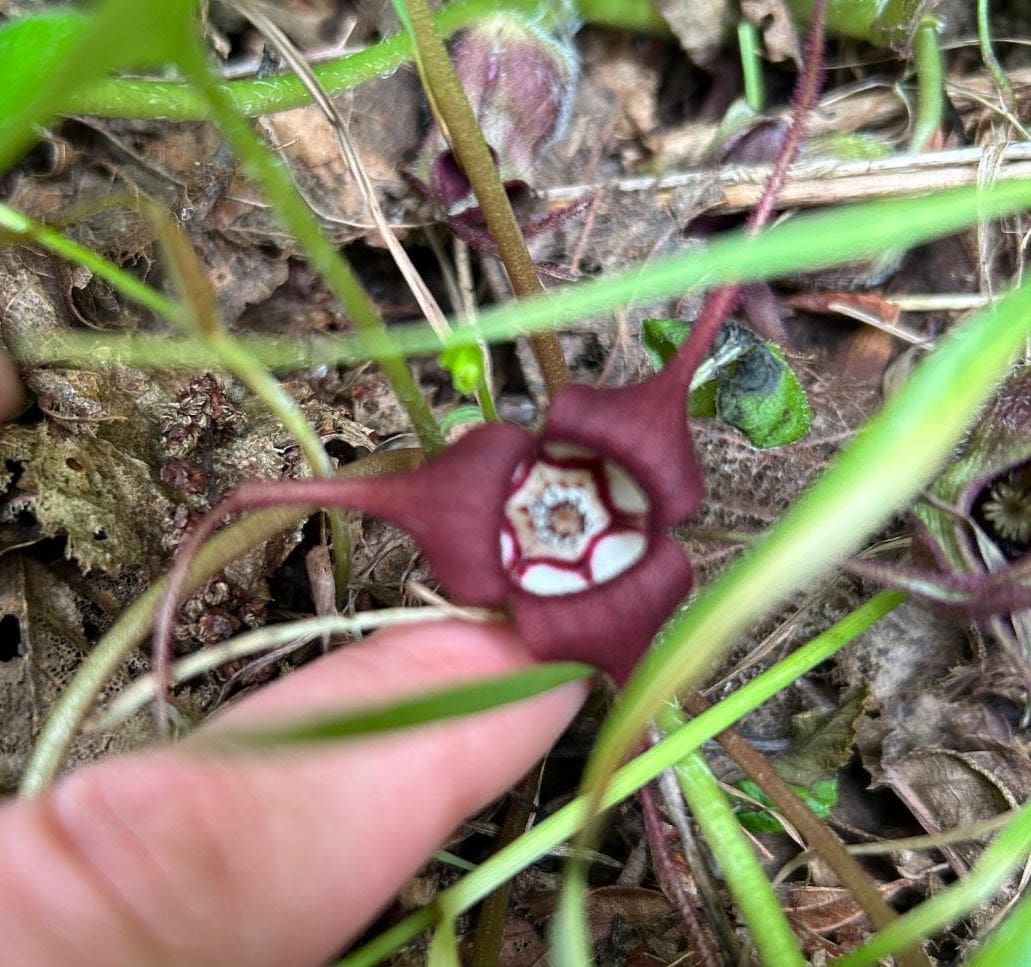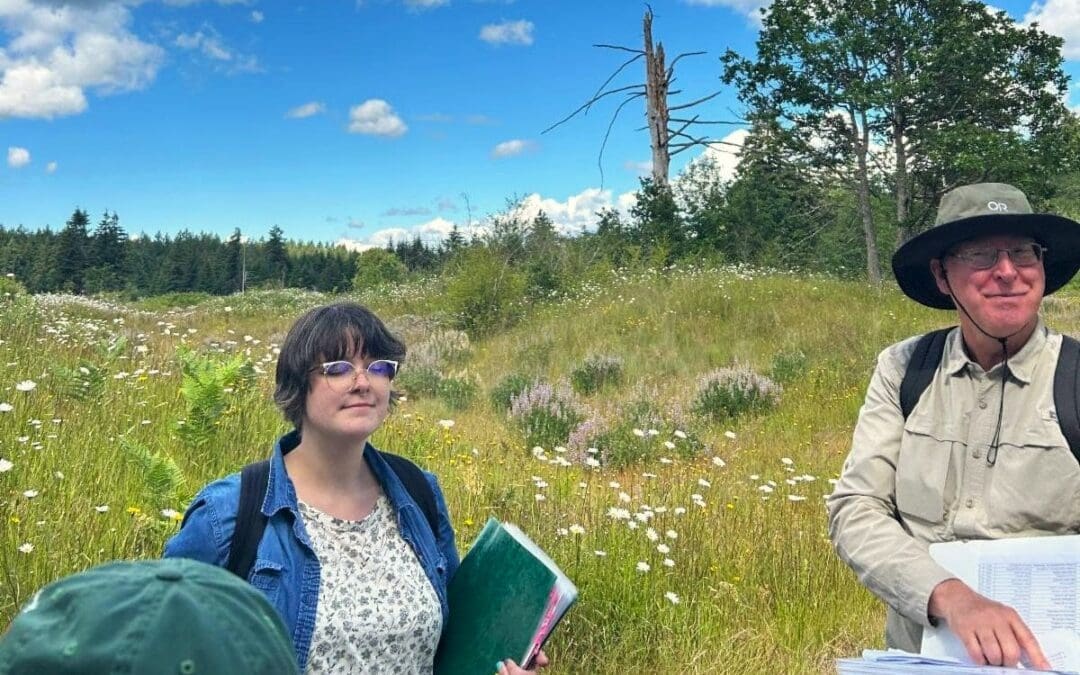Since I started working at Shadow, we have been talking about re-planting the meadow at SHADOW to create a “pocket prairie”. As the establishment of an entire ecosystem is a bit daunting, Land Management Specialist Shelley and I decided to join the Native Plant Salvage Foundation’s (NPSF) prairie tour at Wolf Haven international. We hoped that this tour may help us to understand the requirements for this mini ecosystem to thrive.
Upon arrival at Wolf Haven, we were treated to an overview of their impressive prairie restoration project. The mission of this internationally recognized sanctuary is to conserve and protect wolves and their habitat, which includes a 38-acre section or rare Mima mound prairie. As we learned about how the land is managed by controlled burn, the residents howled creating an especially authentic atmosphere. Historically, small fires were constantly clearing sections of prairie and forest, both naturally and by purposeful management of the South Salish peoples. Because prairies are a relatively early step on the grand scheme of ecological succession, they can be overtaken by longer lived species that create too much shade for the full-sun loving prairie plants. To restore this prairie, volunteers have planted thousands of plugs and metric tons of native seeds. More than 300 Mazama pocket gophers have been re-homed from development sites nearby to the now thriving prairie.
We learned that Washington’s prairies, much like bogs were shaped by glaciers. As they melted and slid, soil or seeds that could somehow have survived the last ice age were scraped away. Due to the history of glacial scraping, prairies are incredibly nutrient deficient, just like our bogs. However, rather than having to survive in highly acidic and moist peat, prairie plants have evolved to eke out a living in a sandy quick draining substrate. Likely, the main difference between these two ecosystems is that bogs formed in shallow depressions and prairies formed in flatlands where water couldn’t pool.

Native cucumber species, known as coastal manroot (Marah oreganus) vining up a douglas fir on the outskirts of the prairie.

Endangered Golden paintbrush (Castilleja levisecta) in bloom!

Western wild ginger (Asarum caudatum) which buries it flowers in the leafy duff in a gary oak woodland. These flowers are primarily pollinated by ants!
Finally, we set out on the botanizing crawl, which was a delight for my nerdy plant ID brain. I learned about a native cucumber vine, an endangered species called golden paintbrush, and even got to see the flowers of the elusive western ginger. I chatted with other native plant enthusiasts and took so many pictures so I could enter my finds into iNaturalist for later study. There is still a long way for us to go before we can claim to have a pocket prairie at SHADOW, but in the upcoming year we are applying to grants and seeking donations to help support the early stages of installation. While we do not have the specific conditions required to support all of the species present in a prairie, we will absolutely be able to make the conditions work for many of them. I am looking forward to a future springtime when we have the prairie installed and the butterflies found only in this type of habitat start to emerge. The wildflower season in a prairie goes all year round because there are always different species blooming at exactly the right time for whoever pollinates them to emerge.
By Education Programs Lead, Cecilia Black



Recent Comments